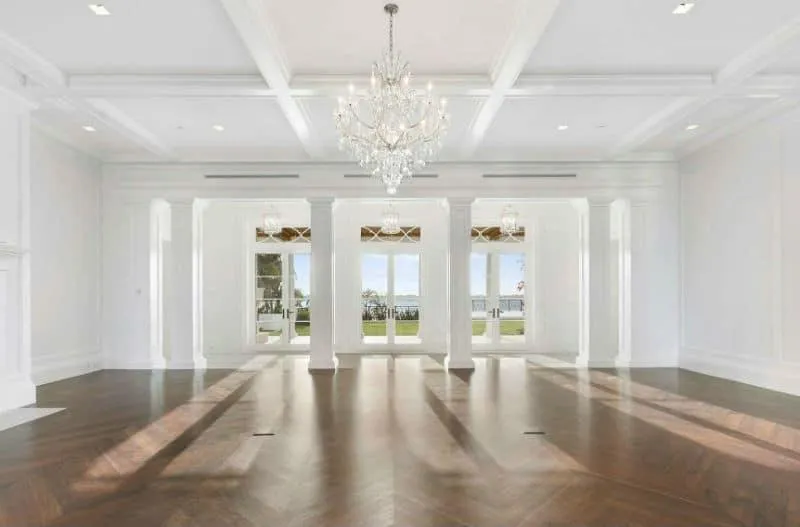Indoor and Outdoor Guideline
Displaying indoor sculptures effectively can transform a room into an artistic haven, enhancing the beauty and character of the space.
The key to a successful sculpture display lies in careful consideration of various elements that complement the artwork while ensuring it remains the focal point.
This guide offers insightful guidelines on how to display sculptures indoors, focusing on the most effective viewing angles, optimal location, appropriate shelving and tables, suitable lighting, and the use of pedestals for larger works.
Each aspect is designed to maximize the visual appeal and impact of your sculptures, making them not just decorative pieces, but integral parts of your indoor environment.
Let's delve into these guidelines to create a space where art and functionality coexist harmoniously.
INDOOR
Viewing Angles: Since sculptures are three-dimensional, they should be viewable from multiple angles. This approach emphasizes their form and detail, similar to theatre in the round.
Location: Avoid placing sculptures in areas that obstruct traffic flow. Ideal locations are at eye level for optimal viewing, without interfering with the room’s functionality.
Shelving and Tables: Utilize shelves, recessed wall spaces, or side tables for displaying smaller sculptures. These locations are typically out of the way, and nearby lamps can serve dual purposes of lighting both the room and the artwork.
Lighting: Sculptures should be well-lit by diffused light sources to avoid washing out details. Avoid direct lighting from below, behind, or dramatic spotlights as they can create harsh shadows or make viewing difficult.
Pedestals for Larger Works: For medium and large sculptures, consider using a pedestal that blends in with the room without drawing attention away from the sculpture. Ensure that the pedestal is sturdy and doesn’t block walking paths.
Harmonizing with Decor: Ensure the sculpture's style and color complement the room's decor and color scheme.
Reflective Surfaces: Place near mirrors or reflective surfaces to enhance visibility from various angles.
Climate Control: Maintain a stable indoor climate, as extreme temperature and humidity can damage certain materials.
Safety Considerations: Secure sculptures firmly to prevent tipping, especially in homes with children or pets.
Rotating Displays: Consider rotating sculptures periodically to refresh the space and offer new perspectives.
Minimizing Sun Exposure: Avoid placing sculptures in direct sunlight to prevent fading or material degradation.
Creating Vignettes: Group smaller sculptures with other art pieces or objects to create visually appealing vignettes.
Interactive Spaces: In interactive areas, like living rooms, position sculptures to stimulate conversation and engagement.


Creating an outdoor space that captivates and inspires can be greatly enhanced by the thoughtful selection and placement of outdoor sculptures. This guide is designed to help you choose and position sculptures in your garden or outdoor area in a way that harmoniously blends with your personal taste and the natural landscape.
We'll explore how to select a sculpture that resonates with your style, rather than merely following passing trends. Key considerations include matching the sculpture to the garden's style, strategic placement for optimal impact, choosing durable materials suited for outdoor conditions, and considering the size and proportion relative to your space.
Additionally, we'll delve into the integration of complementary elements such as water features and lighting, as well as the art of surrounding your sculpture with plants to create a cohesive and visually stunning outdoor environment.
This guide aims to equip you with the knowledge to transform your outdoor area into a personalized sanctuary that features a sculpture as its centerpiece.
OUTDOOR
Sculpture Selection: Choose a piece that resonates with you and enhances your landscape. Avoid focusing solely on trends and select a sculpture that fits your personal or garden style.
Garden Style Consideration: The sculpture should complement the style of your garden or home. For example, lanterns or Buddha statues in a Japanese-style garden, or abstract pieces for contemporary settings.
Placement Strategy: Larger pieces can serve as focal points. Consider the views from all angles and how the sculpture fits into the overall garden landscape.
Material Durability: Outdoor sculptures come in various materials like limestone, concrete, bronze, and metal. Choose materials based on durability and how they weather over time.
Size and Proportion: The size should be proportionate to your garden space. Larger sculptures work as focal points, while smaller pieces are better as accents.
Integrating Elements: Incorporate additional elements like water features or lighting within or around the sculpture to enhance the garden atmosphere.
Complementary Planting: Surrounding the sculpture with plants can enhance its appearance. Choose plants that complement or contrast the sculpture'scolor and consider their seasonal attributes.
Seasonal Considerations: Think about how the sculpture will look across different seasons. Choose materials and designs that stand out in both summer's lushness and winter's sparsity.
Path Integration: Place sculptures near or along garden paths to create an engaging walk-through experience.
Lighting for Nighttime: Install outdoor lighting to highlight the sculpture after dark, enhancing its visibility and beauty at night.
Wind and Weather Protection: Ensure sculptures are secure against strong winds and protected from extreme weather conditions.
View from Inside: Consider how the sculpture looks from inside your home. It should be positioned to be enjoyed from both outdoors and indoors.
Wildlife Consideration: If your area has wildlife, choose materials and designs that can withstand potential animal interactions.
Privacy and Security: Place sculptures where they can be enjoyed while ensuring they are safe from theft or vandalism.
Historical and Cultural Relevance: Choose sculptures that may have historical or cultural significance to your area, enhancing the connection between the landscape and local heritage.
Accessibility: Ensure that the sculpture is easily accessible for up-close appreciation and maintenance, without obstructing garden activities.
Interactive Features: Consider sculptures with interactive elements, like water fountains or kinetic parts, to add a dynamic aspect to your garden.